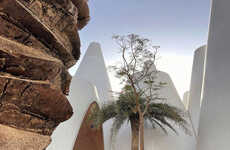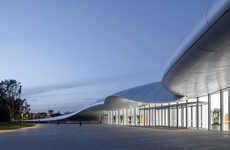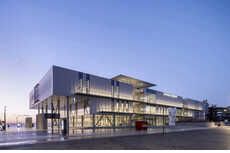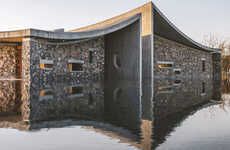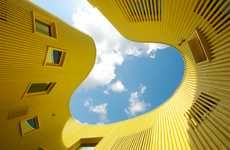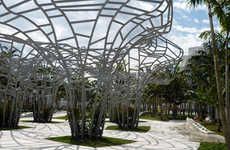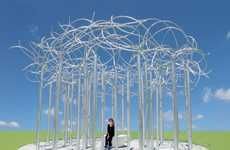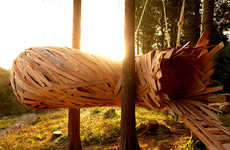
The Istanbul Disaster Prevention Center Takes an Attentive Form
Amelia Roblin — December 11, 2011 — Eco
References: radionica-arhitekture.hr & ecofriend
The last thing you'd like to see is the catastrophe headquarters crumbling with every tremor or powerful wind storm. The composition of the Istanbul Disaster Prevention & Education Center aims to lead by example, embodying a layout and a structure that are receptive to nature's whims.
Radionica Arhitekture of Croatia has won the competition to design this building for Turkey's new preparedness initiative. The edifice will likely house offices for department employees and it will aim to serve the public by teaching them how to react in the case of earthquakes and other natural disasters.
The simulation rooms and information-packed galleries will be found in the fluid low-rise structure that contours the site. Guarding a picturesque park in the middle, the Istanbul Disaster Prevention & Education Center building will assume a flexible constitution and employ eco-friendly technologies.
Radionica Arhitekture of Croatia has won the competition to design this building for Turkey's new preparedness initiative. The edifice will likely house offices for department employees and it will aim to serve the public by teaching them how to react in the case of earthquakes and other natural disasters.
The simulation rooms and information-packed galleries will be found in the fluid low-rise structure that contours the site. Guarding a picturesque park in the middle, the Istanbul Disaster Prevention & Education Center building will assume a flexible constitution and employ eco-friendly technologies.
Trend Themes
1. Receptive Architecture - Opportunity for architects to design buildings that are responsive to nature's whims, creating resilient structures.
2. Disaster Preparedness Education - Demand for educational centers that teach the public how to react in case of natural disasters, creating a market for specialized training facilities.
3. Eco-friendly Technologies - Growing interest in utilizing eco-friendly technologies in building design, presenting opportunities for sustainable innovations in the construction industry.
Industry Implications
1. Architecture - Architects can capitalize on receptive architecture trends by designing buildings that adapt to environmental conditions and enhance safety measures.
2. Education - Increased focus on disaster preparedness education creates opportunities for developing specialized training centers and programs.
3. Construction - The demand for eco-friendly technologies in building projects presents an opportunity for the construction industry to embrace sustainable practices and innovations.
2.8
Score
Popularity
Activity
Freshness




